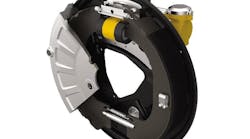Adhesives Expand Fastening Techniques in Industrial Assemblies (.PDF Download)
For as long as humans have been using tools, they have found creative ways to mechanically fasten different materials with ropes, pegs, and wedges. After about a few thousand years of perfecting the art of fastening, someone invented the first adhesive: some birch-bark tar that could bond rocks together. The portfolio of available adhesives has since evolved into a textbook of everything from pressure sensitive adhesive (PSA) tapes to structural-strength curing adhesives.
To compare these various attachment methods—mechanical, thermal and adhesive bonding—it’s important to first consider the advantages and disadvantages of each. Certainly, each method has applications to which it is very well suited.
Mechanical Fasteners
Mechanical fasteners were the first to emerge for the same reasons that they are still used widely today. They are intuitive to use and require little, if any, cleaning or preparation on the parts being joined. Mechanical fasteners create strong joints immediately, many of which can be removed when needed. They also come with lower labor rates compared to other methods, such as thermal attachment (e.g., welding, soldering, and brazing).








